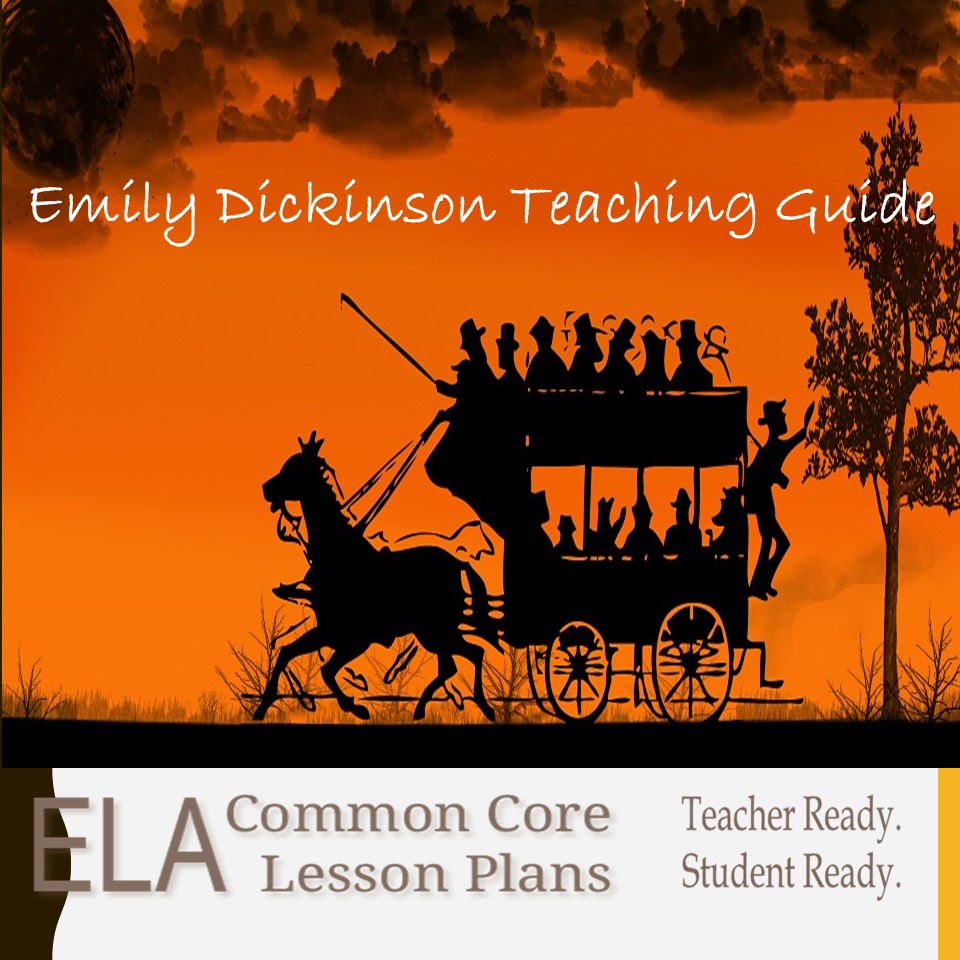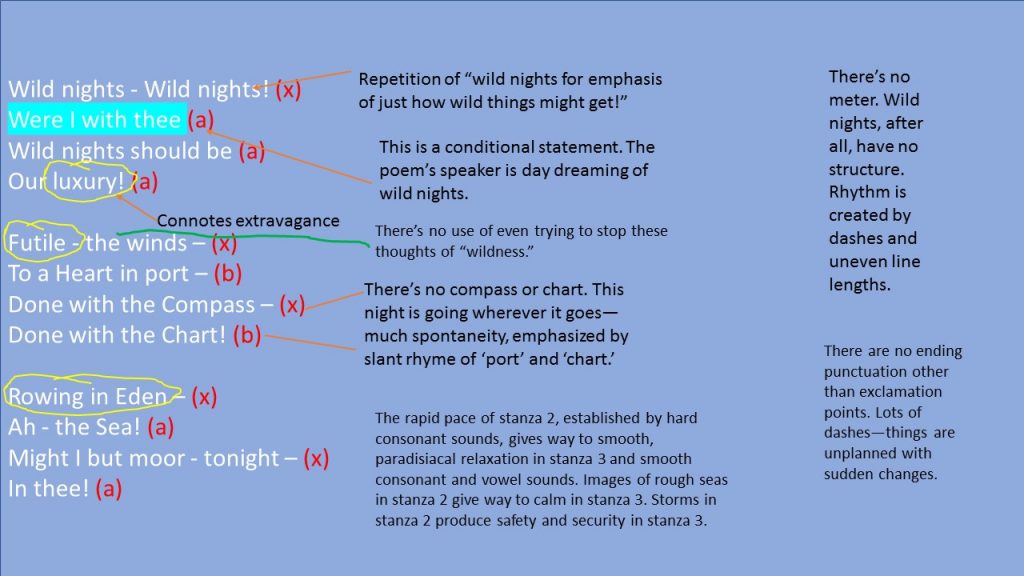If your idea of a wild night involves reviewing poetry lesson plans, then get a life. If you need a quick poem that might grab the attention of teenagers and a nifty lesson plan to go with it, get this lesson plan.
We’ll start with something you can download and print-a copy of the poem with an area for annotation on one side, and directions for how to annotate a poem on the other. All you have to do to prepare for the lesson is hand this out and project or write a copy of the poem on the white board.
Let’s Begin

This is Emily Dickinson. My 10th grade English teacher loved Emily Dickinson. I did not. I do now. Here are some analyses of Emily Dickinson poems that I wrote. May my 10th grade English teacher rest in peace.
Prepare for the lesson by copying the poem on the board. Here it is.
It’s Time to Annotate
- Choose a short poem (15-20 lines). Copy it onto a half-slice of paper and use the other half for writing an analysis.
- Write the poem on the board.
- Read the poem aloud.
- Instruct students to identify the following elements and make notations: rhyme scheme, figurative language, images, symbols, sound devices (alliteration, consonance, assonance, rhythm, onomatopoeia, off rhyme).
- Instruct students to circle any part of the poem that stands out, confuses them, or is important.
- Write questions in the margin; highlight unusual words; mark phrases that indicate the poem’s meaning.
- Determine the poem’s theme and draw arrows to the lines that support the theme.
First-Timer Tips
The Emily Dickinson poetry lesson plans teaching unit contains 28 poems with expert analysis, lesson plans, graphic organizers with answer keys, writing lesson plans, essay rubrics, a quiz, an answer key, and more.
Give students several minutes to annotate individually, using the above instructions. After a few minutes of meandering about, start handing out dry erase markets and instruct individual students to mark their poetic findings on the board.
- Choose your annotation victims….er……volunteers with care. Find those with intelligent notations on their papers to get things started.
- Once a student has made an annotation on the board, instruct him or her to hand the marker to another excited student.
- After substantial annotations, stop and discuss.
It helps to have intelligent analysis to share to augment the class annotations. Here’s what I came up with for this poem.
Discussion Points
After examining this poem a little more closely, it’s advised you tread carefully with some of the innuendos.
- The first thing you need to do is determine the poem’s theme. Here’s what I came up with: “The speaker’s strongest desires include spontaneity in a relationship based on a foundation of peace, security, and tranquility.”
- Then you need to discuss evidence for the theme. I would bring up different elements of poetry for evidence. The rhythm in stanza 2, created by an abundant use of dashes and example of slant rhyme represents spontaneity. The extended boat in a storm metaphor adds to an out of control feeling.
- Discuss more evidence to support the theme. The boat imagery takes a turn from wild to calm, from a boat in a wind storm to a canoe in paradise. The break is created by repetition of “Done” in stanza 2, which leads to peace and security of stanza 3.
Write the Poetry Analysis
Once the annotations are complete, it’s time to write the analysis. Remind students that an analysis consists of facts and commentaries. It is not a summary, a listing of facts, or random, unsubstantiated conjecture. Use the following outline to help students:
Share This:I. Topic sentence stating the title of the poem, the author, and the poem’s theme.
A. Evidence #1: Identify an important line, poetic device, rhyme scheme, etc.
- Analysis/Interpretation #1: Explain how the evidence supports the designated theme.
- Analysis/Interpretation #2: Explain how the evidence supports the designated theme.
B. Evidence #2: Identify an important line, poetic devices, rhyme scheme.
- Analysis/Interpretation #1: Explain how the evidence supports the designated theme.
- Analysis/Interpretation #2: Explain how the evidence supports the designated theme.
C. Concluding Sentence


Speak Your Mind